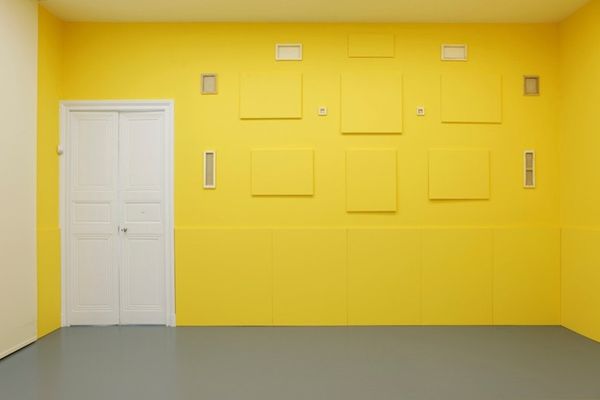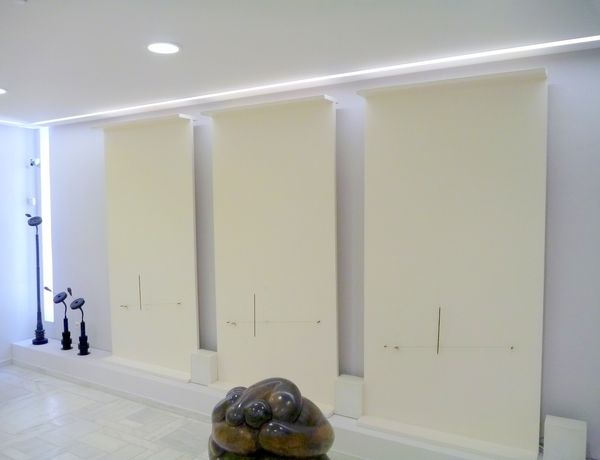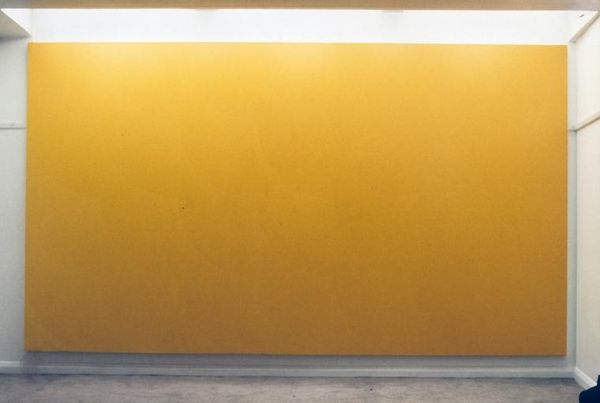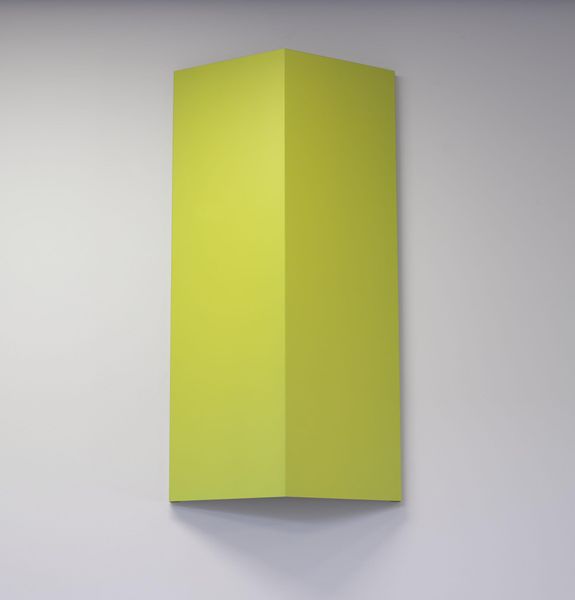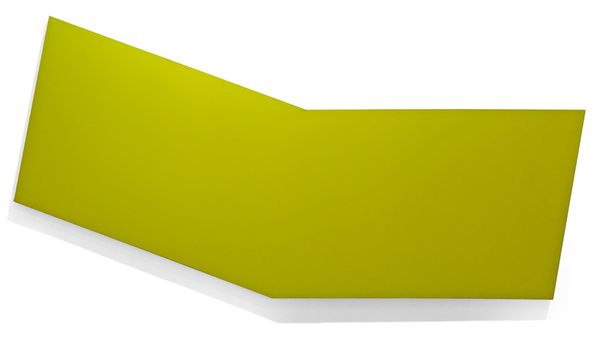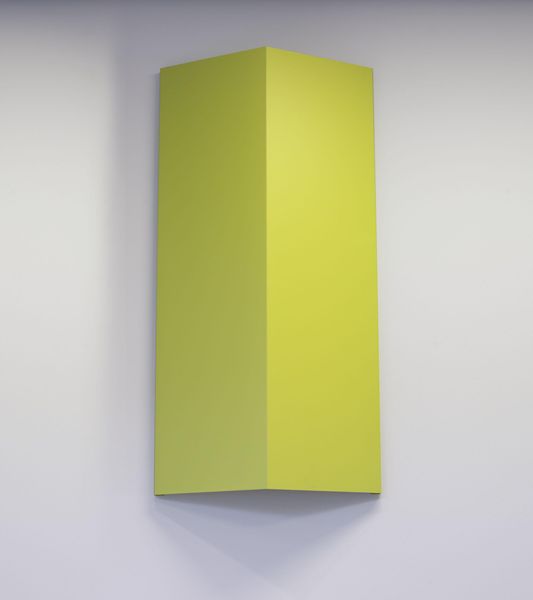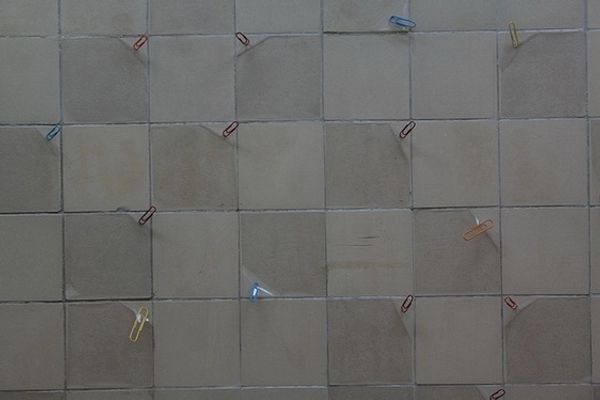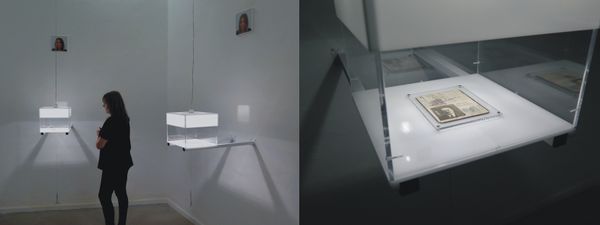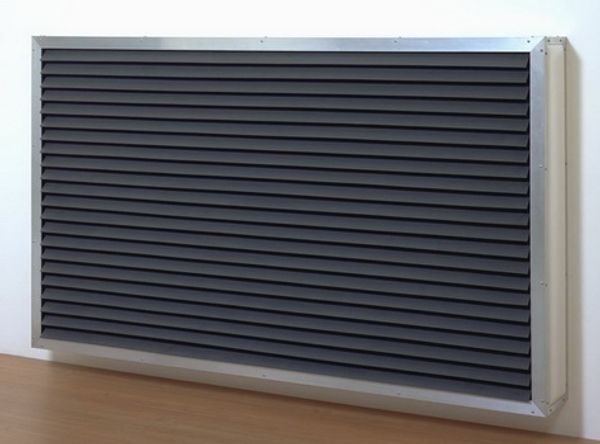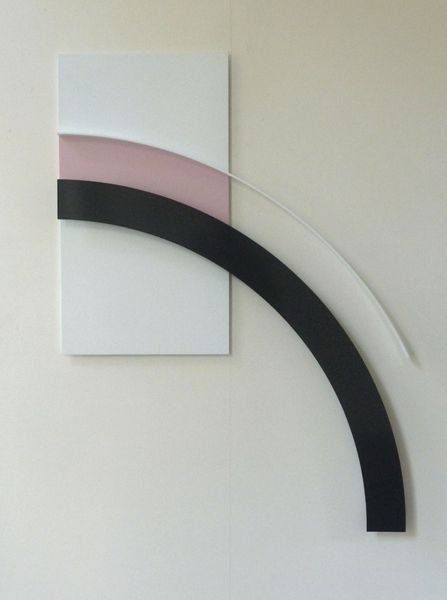
sculpture, installation-art
#
interior architecture
#
kinetic-art
#
interior design
#
conceptual-art
#
postmodernism
#
geometric
#
sculpture
#
installation-art
Copyright: Takis,Fair Use
Editor: This is Takis' "Magnetic Wall" from 1976, an installation piece featuring a bright yellow wall with suspended and seemingly floating geometric forms. I'm initially struck by the almost playful contrast between the rigidity of the geometric shapes and the implied invisible force holding them in place. How do you interpret this work, especially considering its historical context? Curator: Well, isn't it cheeky? This piece, created smack-dab in the middle of the postmodernism period, speaks volumes. Takis, who by the way, saw himself as a "magnetic poet," used these simple materials to express very complicated ideas about invisible energies, technology and nature. You could almost say it's like a minimalist joke about the invisible forces that shape our world! How does the visual language resonate with you? Does the starkness evoke any specific feelings? Editor: It does feel like a statement against the heavy, established art world. The bright color and basic shapes have a definite pop art feel, but the magnetic elements hint at something more complex. Almost a rejection of pure aesthetic in favor of scientific curiosity. Curator: Precisely! Takis was incredibly forward-thinking. He's playing with our perception, almost urging us to consider how unseen forces—like magnetic fields, or, metaphorically, the social and political climates of his time—influence our realities. Does it make you think about art's purpose, perhaps beyond mere decoration? Editor: Absolutely. It shifts the focus from just looking to questioning the underlying principles at play, both in the artwork and in the world. Thanks! Curator: It makes me think of what other things remain invisible, doesn't it?
Comments
No comments
Be the first to comment and join the conversation on the ultimate creative platform.

